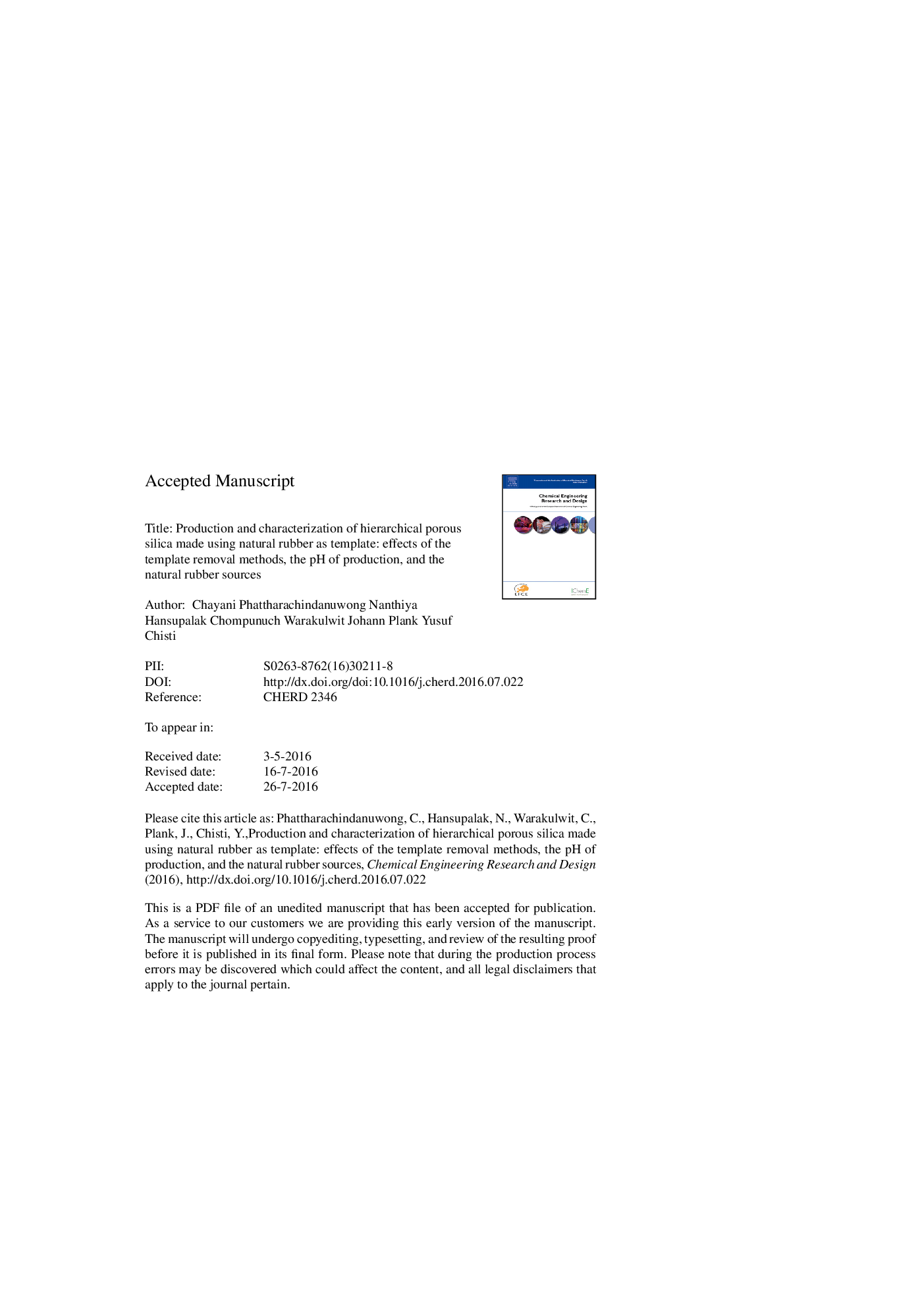| Article ID | Journal | Published Year | Pages | File Type |
|---|---|---|---|---|
| 7006396 | Chemical Engineering Research and Design | 2016 | 37 Pages |
Abstract
A sol-gel process was used to produce hierarchical porous silica (HPS) with and without the use of natural rubber (NR) particles as a templating material. The effects of the following factors on the pore properties are reported: the template-to-silica ratio, the template removal method (either calcination or solvent extraction), the pH, and the source of the NR latex. HPS with macropores formed when the NR template was used. The template affected only the interspacing of silica agglomerates but not the spacing within them. Calcination proved to be more effective than the solvent extraction in removing the template and did not damage the HPS morphology. The pH affected not only the formation of primary silica particles, but also the interactions between the NR template and the primary silica particles. This reduced the BET surface area and the number of macropores in HPS produced at a higher pH. The latex source (whether from a single plantation or mixed latex from multiple plantations) had barely any effect on the properties of the HPS.
Related Topics
Physical Sciences and Engineering
Chemical Engineering
Filtration and Separation
Authors
Chayani Phattharachindanuwong, Nanthiya Hansupalak, Kanokwan Jantawatchai, Chompunuch Warakulwit, Johann Plank, Yusuf Chisti,
